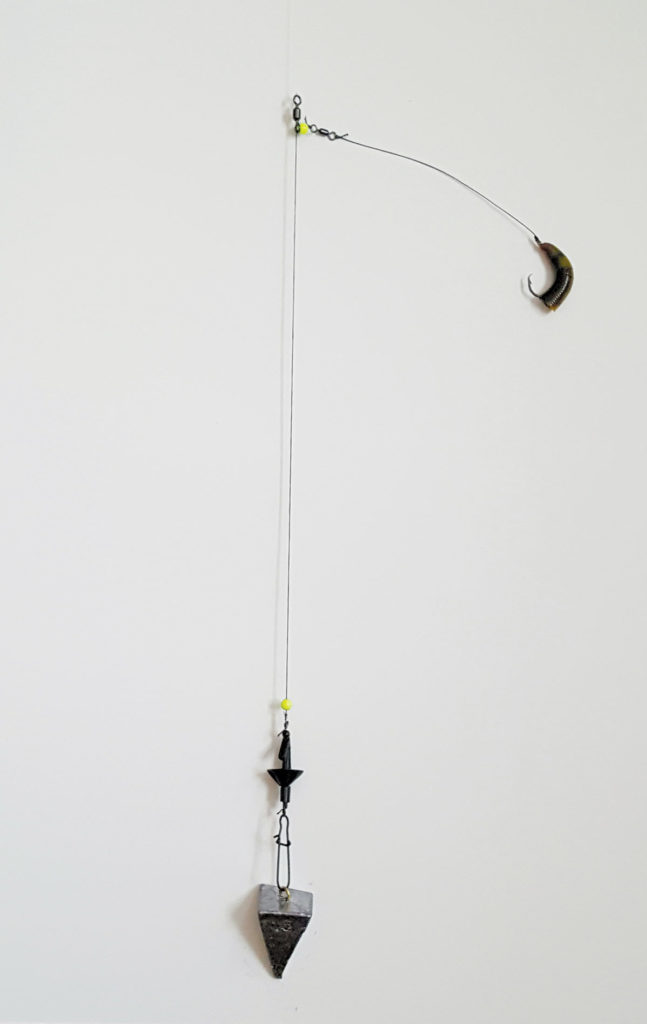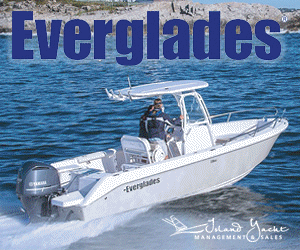
As a distance caster, I get asked a lot about the gear used on the competitive circuit; in fact, it seems most folks think that casting for distance is something unique to the actual contests, and that none of the gear we use is really what you might find in local shops. Not true.
From a rod perspective, there are plenty of great rod makers out there – Lamiglas, Century, CTS, Shimano, Penn, St. Croix, Breakaway, All Star, Okuma, and Daiwa just to name a few, that you’ll find in almost every local shop to fit you and your needs. In terms of top considerations for the price, the 12-foot Penn Prevail is an outstanding heavy duty option, while a 12-foot Tsunami Airwave is a great all purpose rod for both distance and local action.
Rods used for spinning reels generally need to be softer; rods with a fast taper action are better suited for the Brighton style cast (also known as the unitech or high inertia) than rods with a medium or medium slow taper; these rods are better for off the ground casting. Look for a rod with guides close to the size of the reel’s spool you’re going to use. Five or six guides are enough, any more than that reduces distance in my opinion (Baitcaster rods of course can have as many as 10 guides.).
Rod length is personal preference however I recommend 10-1/2- to 12-foot rods as all-purpose rods. When choosing a rod, you should decide on price, length and action. After that the rod must fit you. Fit means to take the rod and place your right hand on the reel seat and place the butt of the rod under your arm. If the end of the rod doesn’t at least reach your armpit it doesn’t fit, you select another rod to tryout.
In terms of your spinning reel selection, when really looking to sling baits out deep (Think red drum along the Outer Banks or trophy stripers at the second or third bar.) the first thing you should look for on a reel is a free spool feature. For years this meant using only Shimano reels, but today Penn, Daiwa, Okuma and even Mitchell make reels with a free spool feature. Good off-the-shelf selections include the Penn Fierce II Liveliner 4000 or 6000, Okuma Avenger Baitfeeder, Shimano OC Baitrunners, Fin-Nor Bait teasers, and Penn SpinfisherV 4500 or 6500 Liveliner.
Line choice is and always will be a big debate. Some fishermen want no stretch; others want abrasion resistance. Braid obviously provides the best of both worlds for casting distance in terms of having thinner diameter and better breaking strength overall versus mono. One thing to remember is always buy quality; don’t skimp on the only connection between you and that trophy fish you’ve been chasing for years. Rarely do you need anything over 20-pound test to get good distance. If you want to use say 15-pound test I suggest you look at the label and find the line’s diameter. For example 15-pound is usually around .31-.33mm, 20-pound is typically .36-39mm. I’ll typically load reels with 15- to 20-pound test, roughly.36mm diameter. Keep in mind that if you’re opting for line upwards of 30-, 40-pound or more, the larger the diameter you choose, the more distance you’ll be sacrificing.
Next comes shock leader. I follow two rules. I use 10 pounds for every ounce casted; for example if casting 5 ounces I’ll use 50-pound test (typically though I use 40 and 80 all the time for my surfcasting purposes). Secondly, your shock leader should run from the butt of the rod up to the tip and then down to the reel and at least five wraps around the spool. That should give you enough shock leader to last all day.
It has been said that Europeans are years ahead of their U.S. counterparts in shore fishing and their rigs prove that. While I’ve often been asked the usual questions, “what are you using for bait,” or “where are you fishing,” I’ve rarely been asked about the rigs I am using. Fact is, I have been using European style clipped down rigs for more than 15 years now, and they work great. These rigs use the idea of clipping the hook down to keep your hook leader close to the sinker and reduce the “helicopter effect,” which is when your bait is acting like a parachute during the cast and reducing your casting distance.
The impact shield is the star of the show, and the secret to these rigs. It is a small plastic disk with a slot in the center so the line for the rig body can pass through it. Once it is secured to the rig body, place a knot and bead above it and secure your hook to it. When you go to cast, this shield keeps your bait in the slipstream created by the sinker and since it is secured your sinker and your hook/bait act as one unit instead of being pulled behind it. Upon impact with the water the shield will ride up the rig body and stop at the knot and bead at which time it will use the line to eject your baited hook.
Another benefit of the shield is that on impact it protects your baited hook so your bait arrives in good condition. Without it once the sinker splashes down, your hook and bait get pulled into the water at speeds ranging from 40 to 70 mph, which due to the surface tension pulls your hook through the bait to some degree.
The first distance casting rig up is the clipped down Pulley Rig. The beauty of this rig is its versatility. It can be tied any length you’d like, fished long or short, hooks can be changed in seconds and it will hook 3/4 of the fish for you. This rig is inherently simple and can be separated into two sections. First the rig body, which consists of a length of 80-pound test mono, can be anywhere from 1 to 6 feet long. On one end tie a swivel with a duo lock snap attached for the sinker. Next slide a breakaway impact shield on. Add a breakaway impact shield hook side up. Next comes a small black bead.

Once the shield and bead are positioned right above the clip you may either tie an overhand knot or use a crimp right above the bead. Next add another small bead, a size 4 or 6 power swivel, another bead and tie another swivel to the other end of the line. Your running line will attach to the swivel between the beads and essentially become a fish-finder rig at the end of the cast.
The second part of this rig is the hook leader. You can use either J-hooks or circle hooks. Snell your hook on a length of 20- to 50-pound test leader material at least 3 inches shorter than your rig body. Attach a small duo lock snap or a spin link to the swivel that the hook attaches to. When baiting the hook leave enough space at the bend so the hook can be attached to the impact shield. It is now completed and ready to cast.

The pulley rig was designed to aid in the surf angler’s greatest challenge, getting the bait out to deeper water where big fish spend most of their time. By clipping down the hook leader, the bait and sinker act as one unit and reduce the distance robbing “helicopter effect.” Also with the bait clipped behind the sinker you reduce the chance of your bait falling off the hook from a hard cast. This works to the angler’s advantage. As the rig lands at the end of the cast the impact forces the shield and bead up the rig body until they come to the knot or crimp then the line running through the center forces the hook out of the shield, and the rig becomes a fish-finder rig. Once a fish moves off with your bait, the swivel travels the length of the rig and stops at the knot.
Another advantage is with the snap attaching the hook leader to the rig, you can have several hooks baited and ready in your cooler. You land a fish and you can switch hooks and cast back out quickly, and the hooked fish can be dealt with later. Even though both styles of hooks can be used circle hooks do the work for you since the fish is usually hooked in the corner of the mouth. This is great for the angler that’s using bait on multiple rods or the angler that values catch and release over meat fishing. For sinkers, I suggest you use the more aerodynamic ones like bank, bass casting, beach bomb, or sputnik as these offer the greatest distances.
For a big bait version of this rig, tie the rig as stated however pass the hook leader through a double barrel crimp then through the hook eye and back through the crimp. Select the size of the loop your hook will be and crimp. Now when using large baits hook your baits as normal however instead of attaching your hook to the impact shield attach the loop.

The Far-Out rig is like the pulley rig but it is not a slip set rig. The hook’s leader is stationary on this rig. To tie it, start with a snelled hook and attach it to a swivel. Next starting at the bottom tie a duo lock snap, attach the impact shield, a bead and a crimp to hold the shield in place. Slide another bead, and the swivel onto the rig body. Attach the hook to the shield and slide the swivel up the rig body until the hook leader is taught and in place. Add another bead and tie another stop knot above and below the beads to trap the swivel. Finish the rig with another swivel and you have a completed far out rig.
The Double Clipped Down rig is somewhat of a combination of both the pulley and the far-out rigs and can deliver two small to medium sized baits long distance. To tie this rig, begin with a 36- to 42-inch length of line for the rig body. Starting at the bottom tie on a duo lock snap, next add an impact shield, bead, and a crimp and crimp in place. Next add a bead, swivel, and another bead. Tie stop knots above and below the beads. Next add another bead, swivel, bead, and tie a swivel to the other end of the line, and you have a completed double clipped down rig. Attach a pair of hooks and it’s ready for action.
The rigs and their components are also available directly from breakawayusa.com.



